
Read Manual Before Operating or
Servicing Machine
401809 Rev P
5700® ALL-DAY BATTERY RIDE-ON SCRAPER
OPERATING &
SERVICE MANUAL


Table of Contents
Table of Contents .......................................................................................................................................................... 3
Features and Specications ......................................................................................................................................... 4
Safety .............................................................................................................................................................................. 6
General Rules For Safe Operation ........................................................................................................................ 6
Ride-On Scraper Safety Guidelines ....................................................................................................................... 7
Hydraulic Safety ..................................................................................................................................................... 8
Components and Assembly ......................................................................................................................................... 9
Charger Instructions .............................................................................................................................................. 9
Machine Charging .................................................................................................................................................. 9
Transport .............................................................................................................................................................. 10
Jobsite Movement ................................................................................................................................................ 10
Cutting Head and Blades ......................................................................................................................................11
Foot Pegs ............................................................................................................................................................ 13
Storage ................................................................................................................................................................ 13
Operation ...................................................................................................................................................................... 14
Operating Controls ............................................................................................................................................... 14
Start-Up Procedure .............................................................................................................................................. 14
Shut-Down Procedure ......................................................................................................................................... 15
Slide Plate Adjustment and Settings .................................................................................................................... 15
Steep Cutting Head Angle ................................................................................................................................... 15
Application Setup ................................................................................................................................................. 16
Ditching ................................................................................................................................................................ 17
Headlight .............................................................................................................................................................. 17
Maintenance Schedule ................................................................................................................................................ 18
Troubleshooting Guide ............................................................................................................................................... 19
Maintenance ................................................................................................................................................................. 20
Manual Slide Plate Removal ................................................................................................................................ 20
Dual Slide Plate Removal .................................................................................................................................... 20
Leak Maintenance ............................................................................................................................................... 20
Check Hydraulic Oil Level .................................................................................................................................... 21
Hydraulic Oil Change Out .................................................................................................................................... 21
Change Hydraulic Cylinder ................................................................................................................................. 21
Change/Remove Hose ........................................................................................................................................ 21
Change Pump ...................................................................................................................................................... 21
Change Valve ...................................................................................................................................................... 21
Change Wheel Motor ........................................................................................................................................... 22
Change Rear Wheel ............................................................................................................................................ 22
Change Caster ..................................................................................................................................................... 22
Change Motor ...................................................................................................................................................... 22
Seat Replacement ............................................................................................................................................... 23
Remove/Replace Foot Peg .................................................................................................................................. 23
Clean Wheel Motor Build-Up ............................................................................................................................... 23
Telematics Option ................................................................................................................................................ 23
Parts List and Diagrams ............................................................................................................................................. 24
Wiring Diagrams .......................................................................................................................................................... 40
401809_5700_RevP3

4
Features and Specications
4
FEATURES
Seat Switch - Ensures the machine will not function without someone
in the operator seat.
18” Wheels - Designed to work on all types of applications, including
debris build-up and slippery/slimy residue (e.g. double stick).
Onboard Battery Charger - Recharges onboard battery pack.
Adjustable Slide Plate - Affords maximum versatility in blade set-
tings.
Forklift Cups - Makes it easier to load and unload on jobsites.
Control Levers - Move forward or in reverse, turn, and brake with
easy-to-move levers.
DC Motor Pump Compartment - Provides easy access to the motor
for maintenance purposes.
Adjustable Foot Rests - Adjusts to operator’s level of comfort.
Cutting Head Cylinder Lift - Changes the angle of the cutting head
via the control handle next to the operator seat.
Debris Deector - Redirects debris away from the operator.
Swivel Cutting Head - Ensures continuous blade contact with the
oor.
Headlight - Illuminates work zone.
Seat Switch
Headlight
18” Wheels
Onboard Battery
Charger
Adjustable Slide Plate
Forklift Cups
Control Levers
DC Motor Pump
Compartment
Adjustable Foot Rests
Cutting Head
Cylinder Lift
Debris Deector
Removable Swivel
Cutting Head
401809_5700_RevP

Features and Specications
5401809_5700_RevP
Product Specications
Width Length Height Weight
(Machine Only)
Weight
(Fully Weighted) Removable Weight
24.5”
(62 cm)
54”
(149 cm)
50.5”
(128 cm)
2,059 lb
(933.9 kg)
2,244 lb
(1,017.9 kg)
185 lb
(83.9 kg)
Power Max. Speed Max. Speed
(5700-18XXXX Only) Sound Level
2.98 kW 120 ft/min 160 ft/min 94-97 dB(A)*
Dual Lift Manual Lift
*Hearing protection is strongly recommended.
Machine Variants
Region Serial Number Power / Frequency Body Panels Slide Plate
Domestic
(North America)
5700-10XXXX 120V / 60 Hz Silver Vein Manual Lift
5700-12XXXX 120V / 60 Hz Green Manual Lift
5700-17XXXX 120V / 60 Hz Silver Vein Dual Lift
5700-18XXXX 120V / 60 Hz Silver Vein Manual Lift
5700-23XXXX 120V / 60 Hz Silver Vein Manual Lift
5700-24XXXX 120V / 60 Hz Silver Vein Dual Lift
International
5700-11XXXX 230V / 50 Hz Silver Vein Dual Lift
5700-13XXXX 230V / 50 Hz Silver Vein Dual Lift
5700-15XXXX 230V / 50 Hz Orange Dual Lift
5700-16XXXX 100V / 50/60 Hz Silver Vein Dual Lift
5700-20XXXX 110V / 50 Hz Silver Vein Dual Lift
5700-26XXXX 230V / 50 Hz Silver Vein Dual Lift
5700-28XXXX 100V / 50/60 Hz Silver Vein Dual Lift
5700-30XXXX 100V / 50/60 Hz Black Dual Lift

Safety
Environment
Avoid use in dangerous environments.
Do not use in rain, damp or wet locations, or in the presence of
explosive atmospheres (gaseous fumes, dust, or ammable mate-
rials). Remove materials or debris that may be ignited by sparks.
Keep work area tidy and well-lit - a cluttered or dark work area may
lead to accidents. Extreme heat or cold may affect performance.
Protect others in the work area and be aware of surroundings.
Provide barriers or shields as needed to protect others from debris
and machine operation. Children and other bystanders should be
kept at a safe distance from the work area to avoid distracting the
operator and/or coming into contact with the machine. Operator
should be aware of who is around them and their proximity. Sup-
port personnel should never stand next to, in front of, or behind
the machine while the machine is running. Operator should look
behind them before backing up.
Do not come within 3 ft. of the machine’s perimeter during
operation.
Guard against electric shock.
Ensure that machine is connected to a properly grounded outlet.
Prevent bodily contact with grounded surfaces, e.g. pipes, radia-
tors, ranges, and refrigerators. When scoring or making cuts,
always check the work area for hidden wires or pipes.
6
GENERAL RULES FOR SAFE OPERATION
Before use, anyone operating or performing maintenance on this equipment must read and understand this manual, as well as any labels pack-
aged with or attached to the machine and its components. Read the manual carefully to learn equipment applications and limitations, as well
as potential hazards associated with this type of equipment. Keep manual near machine at all times. If your manual is lost or damaged, contact
National Flooring Equipment (NFE) for a replacement.
Personal
Dress properly and use safety gear.
Do not wear loose clothing; it may be caught in moving parts.
Anyone in the work area must wear safety goggles or glasses and
hearing protection. Wear a dust mask for dusty operations. Hard
hats, face shields, safety shoes, etc. should be worn when speci-
ed or necessary.
Maintain control; stay alert.
Keep proper footing and balance, and maintain a rm grip. Ob-
serve surroundings at all times. Do not use when tired, distracted,
or under the inuence of drugs, alcohol, or any medication that
may cause decreased control.
Keep hands away from all moving parts and tooling.
Wear gloves when changing tooling. Remove tooling when ma-
chine is not in use and/or lower cutting head to the oor.
Do not force equipment.
Equipment will perform best at the rate for which it was designed.
Excessive force only causes operator fatigue, increased wear, and
reduced control.
Equipment
Use proper parts and accessories.
Only use NFE-approved or recommended parts and accessories.
Using any that are not recommended may be hazardous.
Ensure accessories are properly installed and maintained.
Do not permanently remove a guard or other safety device when
installing an accessory or attachment.
Inspect for damaged parts.
Check for misalignment, binding of moving parts, loose fasteners,
improper mounting, broken parts, and any other conditions that
may affect operation. If abnormal noise or vibration occurs, turn
the machine off immediately. Do not use damaged equipment until
repaired. Do not use if power switch does not turn machine on and
off. For all repairs, insist on only identical NFE replacement parts.
Maintain equipment and labels.
Keep handles dry, clean, and free from oil and grease. Keep cut-
ting edges sharp and clean. Follow instructions for lubricating and
changing accessories. Motor and switches should be completely
enclosed at all times with no exposed wiring. Inspect cord regu-
larly. Labels carry important information; if unreadable or missing,
contact NFE for a free replacement.
Avoid accidental starting; store idle equipment.
When not in use, ensure that the machine is unplugged and
breaker is set to OFF. Store in a dry, secured place. Remove tool-
ing when storing, and keep away from children.
Maintenance & Repairs
Begin maintenance work only when the machine is shut
down, unplugged, and cooled down.
Use proper cleaning agents.
Ensure that all cleaning rags are ber-free; do not use any aggres-
sive cleaning products.
Schedule regular maintenance check-ups.
Ensure machine is properly cleaned and serviced. Remove all
traces of oil, combustible fuel, or cleaning uids from the machine
and its connections and ttings. Retighten all loose ttings found
during maintenance and repair work. Loose or damaged parts
should be replaced immediately; use only NFE parts.
Do not weld or ame-cut on the machine during repairs, or
make changes to machine without authorization from NFE.
401809_5700_RevP

7
Safety
7
CAUTION: THE RETURN CAPACITY WHEN CHARGING THE BATTERY IS NOT 1-TO-1. ENSURE THAT BATTERY IS ALLOWED TO
CHARGE FOR A GREATER PERIOD OF TIME THAN IT WAS USED (IF NOT COMPLETING A FULL CHARGE). FOR MAXIUMUM BAT-
TERY LIFE, FULLY RECHARGE BATTERY (LED WILL APPEAR SOLID GREEN) AT LEAST TWICE PER WEEK. FAILURE TO DO SO MAY
RESULT IN SHORTER RUNTIMES AND PREMATURE BATTERY FAILURE.
WARNING: ONLY USE BATTERY/CHARGER CONFIGURATIONS SPECIFICALLY APPROVED BY NFE. USE OF A DIFFERENT OR
INCORRECT CONFIGURATION HAS A HIGH RISK OF LEADING TO FIRE, PREMATURE BATTERY FAILURE, DAMAGE TO MACHINE,
AND/OR BODILY INJURY.
WARNING: GRINDING/CUTTING/DRILLING OF MASONRY, CONCRETE, METAL AND OTHER MATERIALS CAN GENERATE DUST,
MISTS AND FUMES CONTAINING CHEMICALS KNOWN TO CAUSE SERIOUS FATAL INJURY OR ILLNESS, SUCH AS RESPIRATORY
DISEASE, CANCER, BIRTH DEFECTS OR OTHER REPRODUCTIVE HARM. IF YOU ARE UNFAMILIAR WITH THE RISKS ASSOCIATED
WITH THE PARTICULAR MATERIAL BEING CUT, REVIEW THE MATERIAL SAFETY DATA SHEET AND/OR CONSULT YOU EMPLOYER,
THE MATERIAL MANUFACTURER/SUPPLIER, GOVERNMENTAL AGENCIES SUCH AS OSHA AND NIOSH AND OTHER AUTHORI-
TIES ON HAZARDOUS MATERIALS. CALIFORNIA AND SOME OTHER AUTHORITIES, FOR INSTANCE, HAVE PUBLISHED LISTS OF
SUBSTANCES KNOWN TO CAUSE CANCER, REPRODUCTIVE TOXICITY, OR OTHER HARMFUL EFFECTS. CONTROL DUST, MIST
AND FUMES AT THE SOURCE WHERE POSSIBLE. IN THIS REGARD USE GOOD WORK PRACTICES AND FOLLOW THE RECOM-
MENDATIONS OF THE MANUFACTURER/SUPPLIER, OSHA/NIOSH, AND OCCUPATIONAL AND TRADE ASSOCIATIONS. WHEN THE
HAZARDS FROM INHALATION OF DUST, MISTS AND FUMES CANNOT BE ELIMINATED, THE OPERATOR AND ANY BYSTANDERS
SHOULD ALWAYS WEAR A RESPIRATOR APPROVED BY OSHA/MSHA FOR THE MATERIAL BEING CUT.
Charger Operation
Ensure proper use of charger.
• Once connected and plugged into AC power, the LED will in-
dicate whether or not it is charging. Refer to manufacturer’s
charger manual.
• Only use charger on branch circuits protected by a circuit
breaker or fuse that can carry the power of the charger.
• Do not use charger if it shows signs of physical stress, or if
DC output leads or connector feel hot when used.
• Do not disconnect DC output clamps or connector from bat-
teries while charger is on. This could cause an explosion.
• Failure to unplug AC power before moving equipment will
damage cords, plugs, and receptacles.
• Do not over-discharge batteries, this could cause batteries
to fail. Re-charge as soon as possible after discharge; if they
are warm, rst allow them to cool.
• Charger is not water proof, only resistant, and cannot with-
stand immersion, continuous exposure, or heavy rain.
• A drive lockout option will disable the drive mechanism of
the machine while the charger is plugged in.
• There is a built-in Low Voltage Interrupter that continuously
monitors for low voltage and will sound when voltage falls. At
44V the alarm will sound; stop immediately and recharge. At
43.5V the machine will auto-disconnect and shut down; let
machine sit until batteries recover enough to drive to outlet.
• Chargers are equipped with a grounding plug.
Note: Leaving the charger plugged in does not harm the battery
and is preferred to leaving the battery in a state of discharge.
Scraping
Do not drive machine along hills or uneven surfaces.
The weight of the machine may become distributed differently if on
an uneven surface. Too much of an angle could make the machine
unsafe or cause it to tip over. Always keep the front of the machine
facing downward while traveling up or down ramps or inclines. Do
not run the machine in unsafe environments.
Inspect work area for potential hazards prior to operation.
Observe location of electrical supplies and extension cords.
Do not allow cutting heads to come into contact with any electrical
supply or extension cord.
Operator must be seated before starting machine and should
stay seated until motor has stopped running.
This machine is equipped with a safety switch under the seat,
which requires the operator to be seated before the machine can
be operated. Do not attempt the start-up procedure without rst
being seated on the machine.
Batteries and Chargers
Use caution; risk of explosive gases.
Batteries generate explosive gases during normal operation. Do
not use near fuels, grain, dust, solvents, or other ammables;
never smoke near the machine, battery, or charger.
Inspect battery and charger regularly.
Disconnect charger from wall outlet before operating. Machine
should be off before connecting to a power source. Periodically
inspect batteries, cables, charger, and all plug connections. Be
extremely cautious when working with batteries. Do not open or
tamper with batteries; doing so could cause electrical shock.
WARNING: BE CAUTIOUS WHEN WORKING WITH
BATTERY. IF ELECTROLYTIC ACID GETS IN THE EYES,
IMMEDIATELY FLUSH OUT WITH COLD, FRESH WATER
FOR AT LEAST 10 MINUTES AND GET MEDICAL HELP.
RIDE-ON SCRAPER SAFETY GUIDELINES
401809_5700_RevP

Safety
8
HYDRAULIC SAFETY
Maintaining a Safe Work Environment
Establishing a safe work environment in and around your hydraulic equipment is extremely important. The easiest and most effective way to
avoid problems is to make sure associates understand their equipment, know how to operate the machines safely, and recognize the dangers if
handled carelessly. A few things to be aware of are:
• Pressure: Hydraulic uid under pressure is dangerous and can cause serious injury. Never look for a leak when unit is under pressure.
Using your hand could cause serious injury. A few common ways to encounter hydraulic uid under pressure include:
▪ Pinhole: Fluid under pressure can cause serious injury. It can be almost invisible escaping from a pinhole, and it can pierce the skin
into the body.
▪ Leak: Keep ttings and hoses tight. Only check and service when not under pressure. Leaking hydraulic uid is hazardous; in addition
to making workplace oors slippery and dangerous, it also contaminates the environment. Before cleaning an oil spill, always check
EPA, state, and local regulations.
▪ Burst: Whether due to improper selection or damage, a ruptured hose can cause injury. If it bursts, a worker can be burned, cut,
injected, or may slip and fall.
▪ Coupling Blow-Off: If the assembly is not properly made or installed, the coupling could come off and hit or spray a worker, possibly
resulting in serious injury. Never operate machine without guards.
• Flammability: When ignited, some hydraulic uids can cause res and/or explode.With the exception of those comprised primarily of
water, all hydraulic uid is ammable (including many “re-resistant” hydraulic uids) when exposed to the proper conditions. Leaking pres-
surized hydraulic uids may develop a mist or ne spray that can ash or explode upon contact with a source of ignition. These explosions
can be very severe and could result in serious injury or death. Precautions should be taken to eliminate all ignition sources from contact
with escaping uids, sprays or mists resulting from hydraulic failures. Sources of ignition could be electrical discharges (sparks), open
ames, extremely high temperatures, sparks caused by metal -to -metal contact, etc.
• Mechanical: Hydraulic uid creates movement, which means some equipment may move. Observe surroundings and equipment at all
times.
• Moisture: Do not use in wet or high moisture conditions.
• Electrical: Faulty wiring can be an electrical hazard. A regular preventive maintenance program should always include a wiring check. If
applicable, disconnect battery before serving.
• Temperature: Because this machine operates at a relatively low pressure, overheating is not common. If surface of tank becomes too hot
to touch by hand (above 130ºF or 55°C), shut off machine and allow it to cool.
Hydraulic Fluid
Only use Texaco Rando 46 Hydraulic Oil or compatible uid like ISO or AW #46 from a brand name manufacturer. Non-compatible uids could
cause damage to unit or serious injury.
CAUTION: NEVER USE YOUR HANDS TO CHECK FOR LEAKS OVER HOSE OR HYDRAULIC CONNECTIONS. USE A PIECE OF CARD-
BOARD TO LOCATE A PRESSURIZED LEAK. FOR LOW PRESSURE LEAKS (DRIPS), USE A RAG TO CLEAN THE AREA AND DETERMINE
WHERE THE LEAK ORIGINATES.
DANGER: DO NOT TOUCH A PRESSURIZED HYDRAULIC HOSE ASSEMBLY WITH ANY PART OF THE BODY. IF FLUID PUNCTURES
THE SKIN, EVEN IF NO PAIN IS FELT, A SERIOUS EMERGENCY EXISTS. OBTAIN MEDICAL ASSISTANCE IMMEDIATELY. FAILURE TO DO
SO COULD RESULT IN LOSS OF THE INJURED BODY PART OR DEATH.
401809_5700_RevP

Components and Assembly
9
CHARGER INSTRUCTIONS
See Ride-On Safety Guidelines for charger safety and instructions.
Before making AC connections, refer to the requirements on the charger ID label.
This battery charger must be grounded to reduce the risk of electric shock. Chargers are
equipped with a grounding type plug.
If an extension cord must be used, ensure it is in good condition. Use the one provided
with the machine. The use of an improper extension cord could result in a risk of a re
or electric shock. Locate all cords so that they will not be stepped on, tripped over, or
otherwise subjected to damage or stress.
MACHINE CHARGING
This machine has an onboard charger (Figure 1).
1. Connect to power source using the properly sized extension cord. Note: Not using
the proper extension cord could cause improper charging and/or charger damage.
Only use extension cord provided by NFE.
2. Complete charging sequence. Refer to Charger manual for more details.
3. Disconnect cord from the power source. Ensure cord and plug are completely se-
cured to the machine. Note: Cord can fall under machine which could damage cord
and/or plug.
4. Release red emergency stop button.
WARNING: DISCONNECT FROM POWER SOURCE BEFORE OPERATING.
FAILURE TO DO SO WILL RESULT IN MACHINE NOT OPERATING.
CAUTION: THE CHARGER IS NOT WATER PROOF, IT IS WATER RESISTANT.
IT CANNOT WITHSTAND IMMERSION, CONTINUOUS EXPOSURE (SUCH AS
PRESSURE WASHERS OR HOSES), OR HEAVY RAIN.
WARNING: ELECTRICAL SHOCK HAZARD. ONLY USE NATIONAL’S AP-
PROVED CHARGING SYSTEM.
CAUTION: WHEN ALARM SOUNDS, IMMEDIATELY MOVE MACHINE TO
OUTLET FOR CHARGING.
WARNING: ALWAYS FIND A SAFE PLACE FOR RECHARGING POWER
PACKS WITH GOOD VENTILATION AWAY FROM SPARKS OR FLAME SOURCES
AND AWAY FROM BYSTANDERS. ROPE OFF IF NECESSARY.
FIG. 1
401809_5700_RevP

10
Components and Assembly
10
FIG. 3
TRANSPORT
• Secure machine with ratchet straps during transport. Proper securing straps need
to be rated at least twice the weight of the machine.
• Chock wheels to keep machine from rolling, but do not use them on their own.
• Hydraulic levers should be straight up in the neutral position, not locked in the
forward or backward positions.
• Lift machine off swivel caster by lowering cutting head for better stabilization. Use
transport wheels when doing this.
• Remove blade, cutting head, and added weights during transport.
• Cutting head and slide plate can be removed to make machine more compact.
• Never leave machine unattended on an incline.
Dock Heights
It is best to load or unload the machine from a level dock height.
Power Gate
A power gate can be used when the dock height is not available. Ensure gate is properly
rated for 3,000 lbs (1,361 kg). To better secure machine, place onto the lowered cutting
head; raise machine off the caster. Tie machine down and chock wheels.
Forklift Cups
There are two forklift cups mounted under the front of the machine (Figure 4). Slide fork-
lift forks through the cups, then slide as far back as possible (Figure 4.1). Before lifting
machine, secure it to the forklift with 3,000 lbs (1,361 kg) or heavier straps or a chain. Tilt
forks back to lift machine.
Palletizing
Only use a solid platform pallet. If a solid platform pallet is not available, place a piece of
¾” plywood on top of a pallet. Using a forklift, with the forks inserted in the forklift cups,
place machine on pallet. Use properly rated ratchet straps to secure machine to pallet.
JOBSITE MOVEMENT
Taping Wheels
Taping the wheels with a wide masking tape helps prevent dirtying and damaging the
oors during move-in and move-out.
FIG. 2
FIG. 4
FIG. 4.1
CAUTION: MACHINE IS BACK HEAVY. DO NOT RUN ON STEEP INCLINE
THIS COULD CAUSE MACHINE TO TIP OVER! (FIGURE 2). DO NOT USE A
RAMP TO MOVE MACHINE.
Fork Lift Cup
WARNING: MACHINE HAS A SWIVEL FRONT CASTER. NEVER SIDE HILL
(FIGURE 3) THE MACHINE ON A INCLINE WITHOUT POWER, THE FRONT
CASTER WILL CAUSE MACHINE TO SWING TO THE LOWEST POINT. IF IT IS
NECESSARY TO RUN MACHINE ON AN INCLINE, RUN MACHINE ON CUTTING
HEAD. PLACE AT LEAST A 8’’ CUTTING HEAD IN MACHINE. TO KEEP FROM
DAMAGING FLOOR, CLAMP A PIECE OF CARPET INTO CUTTING HEAD. THIS
WILL GIVE POSITIVE CONTACT WITH THE FLOOR WHEN POWER IS DISEN-
GAGED FROM THE WHEELS.
401809_5700_RevP

Components and Assembly
Transport Wheels
The front wheel assembly is included and very helpful when moving a machine around
on a jobsite or loading a machine that is not on a pallet. It allows machine stability and
safe transportation over most surfaces. It is quick and easy to attach or detach.
1. Raise slide plate so the bottom of the slide plate is higher or even with the bottom
of the guide channels, 6”-8” (15.25-20.3 cm) is ideal.
2. Raise cylinder; insert front wheel assembly into cutting head.
3. Secure with pin.
When nished, the caster wheels should swivel freely and the front wheel plate should be
parallel with the oor.
Moving Machine without Power (Pushing Machine)
Forward: To move the machine forward, levers need to be pushed forward. To lock
levers in place, connect a bungee strap from each lever (pushing levers forward), pulling
straps down to and connecting to the front plate (Figure 5). Never leave machine unat-
tended with strap holding levers open.
Backward: To move machine backward, levers need to be pulled backwards. To lock
levers in place, connect a bungee-strap from each lever (pushing levers backward), Pull-
ing straps to the back of the machine and connecting behind the seat or the rear of the
machine (Figure 6). Never leave machine unattended with strap holding levers open.
Moving Machine on Caster
Moving a weighted machine on only the front caster and not on the cutting head or the
front wheel assembly can make the machine sluggish. It may also turn hard to the right
or left.
CUTTING HEAD AND BLADES
Matching the correct cutting head, blade size, blade angle, and added weight to the ma-
chine is important. For every material being removed, there is an optimum blade width,
thickness, sharpness, angle, and bevel (up or down).
The machine is supplied with a 12” cutting head. Having additional cutting heads will
save time on the job. Insert blades into the extra cutting heads before starting a job.
When the blade is dull, take out the cutting head and replace it with another.
Shear Point
The shear point is the point where material to be removed will cut cleanly from the oor. If
the blade is too wide, too dull, or too steep the shear point is lost.
Inserting the Cutting Head
1. With machine off, insert desired cutting head into cutting head holder.
2. Secure with cutting head clip.
11
WARNING: REMOVE STRAPS BEFORE STARTING MOTOR. FAILURE TO DO
SO WILL MAKE MACHINE MOVE AND MAY CAUSE DAMAGE AND/OR BODILY
INJURY.
WARNING: PROVIDE BARRIERS OR SHIELDS AS NEEDED TO PROTECT
OTHERS FROM DEBRIS AND MACHINE OPERATION. OPERATOR SHOULD BE
AWARE OF THE PROXIMITY OF OTHERS.
FIG. 5 FIG. 6
401809_5700_RevP

Components and Assembly
12
Swivel Head
The swivel head keeps the blade in contact with the oor even when the oor is uneven.
When using a at blade, turning the head over 180° provides another sharp edge on the
blade without having to replace the blade.
Inserting or Changing Blades
Sharp blades are imperative for good performance.
1. Using a 3/4’’ socket wrench, loosen bolts on cutting head. Quantity of bolts will vary
depending upon cutting head size.
2. Insert blade into the cutting head to back of notch (Figure 7); tighten rmly.
Note: A cordless 3/8’’ drive impact wrench will speed up this process.
Inserting a Shank Blade
Shank blades do not require a cutting head.
1. Insert desired shank blade into cutting head holder.
2. Secure with cutting head clip.
Self-Scoring Blades
Instead of pre-scoring a job for soft goods (e.g. carpet, vinyl, linoleum, membrane), the
self-scoring blades automatically do the scoring. It is important to keep the “wings” on a
self-scoring blade sharp.
WARNING: BLADES ARE SHARP, USE EXTREME CAUTION. ALWAYS WEAR
GLOVES AND SAFETY GLASSES WHEN HANDLING BLADES. NEVER CHANGE
CUTTING HEAD OR SERVICE BLADES WHILE MACHINE IS RUNNING.
FIG. 7
Blade Securing Bolt Cutting Head
Blade Notch
401809_5700_RevP

Components and Assembly
13
Blade Setting
• Proper blade size and placement, depending on material and sub-oor type, af-
fects performance.
• For better results during difcult removal applications use a smaller blade.
• Start with a narrow blade, then increase blade size to optimize cutting pass. Nar-
rower blades work easier than wider blades and usually clean the oor better.
Wider is not always better or faster.
• Normally, bevel on blade is up for concrete (Figure 9); bevel down for wood (Figure
9.1)
• Dull blades greatly affect the performance of the machine and reduce cutting ability,
sharpen or replace as needed.
• After removing a portion of material, clear the work area of debris. This will give the
machine maximum performance and help to keep the work area safe.
FOOT PEGS
Rest feet on foot pegs while operating machine. Foot pegs are adjustable. Ensure secur-
ing knob is tightened.
STORAGE
When the machine is in storage, disconnect the blue plug (Figure 10) and turn circuit
breaker to “OFF” (Figure 11).
FIG. 9
FIG. 9.1
Bevel Up
Bevel Down
FIG. 10
48 Volt
Blue Plugs
FIG. 11
Circuit
Breaker
401809_5700_RevP

14
Operation
FIG. 12
OPERATING CONTROLS
Power On Button/Key (Figure 12)
Never use the Power On button/key as a method for speed control. Speed control is
achieved by the hydraulic valve only. Using the On/Off switch repeatedly will cause
excessive wear and premature failure of electrical components.
Hydraulic Levers (Figure 13)
The hydraulic levers steer the machine. For even movement, move levers slowly. Fast
movement of control levers will result in jerky, uneven movement.
• To move the machine forward, push both levers forward
.
• To move the machine in reverse, pull both levers backward .
• To turn the machine quickly to the right, move the left lever forward and the right
lever backward .
• To turn the machine quickly to the left, move the left lever backward and the right
lever forward
.
• To turn the machine slowly to the right or left, push or pull only the right or left lever
forward or.
• Putting the levers in the center/neutral position causes the wheels to lock-up.
• Correcting direction while moving forward is accomplished by slightly reducing
pressure on one lever or the other while moving.
Emergency Stop Switch (Figure 14)
The emergency stop switch is designed to immediately cut power to the system. It must
be reset in order to restart the machine.
Seat Switch
The seat has a safety switch. Operator must be properly positioned for machine to run.
Cylinder Lift Lever (Figure 15)
The cylinder lift lever raises and lowers the cylinder and cutting head. After setting the
slide plate to proper height, use the cylinder lift lever to set blade to proper cutting angle.
• To raise the cutting head, pull back on the cylinder lift lever.
• To lower the cutting head, push the cylinder lift lever forward
.
• Continuing to push the cylinder lift lever forward will adjust the angle of the cutting
head. This will also jack up the front of the machine for maintenance purposes.
START-UP PROCEDURE
1. Verify 70 Amp circuit breaker is in “ON” position (Figure 16).
2. Verify 48V blue plugs are rmly connected.
3. Operator should be properly positioned on seat.
4. Twist emergency stop (Figure 14) up.
5. Push green “ON” button (domestic only) or turn the key (international only).
6. Maneuver machine with hydraulic levers (Figure 13).
FIG. 14
FIG. 16
FIG. 13
Emergency Stop Switch
Circuit
Breaker
FIG. 15
Domestic International
401809_5700_RevP

15
Operation
SHUT-DOWN PROCEDURE
The machine will stop when the operator is no longer seated, or when the emergency
stop is engaged.
Remove blade or drop cutting head to the oor when machine is not in use.
SLIDE PLATE ADJUSTMENT AND SETTINGS
Manual Lift (Figure 17)
• Loosen the four bolts on the front of the slide plate with a 1-1/8’’ wrench. Slide plate
up or down to achieve the desired height of the cutting head. Firmly tighten all four
bolts when nished.
• A low setting orients the slide plate approximately 1” (2.5 cm) off the oor. This is
for normal removal of most materials.
• A high setting orients the slide plate approximately 6” (15 cm) off the oor. This is
for re-scraping glue and some thin-soft coatings.
Dual Lift (Figure 18)
• Prior to adjusting the dual lift hydraulic slide plate, ensure the channel guide is free
of any debris and the machine is safely positioned on a at surface.
• To set the height of the hydraulic slide plate start, adjust the angle of the cutting
head holder with the cylinder lift lever. Pull back on the cutting head lever and raise
the cutting head holder to an angle higher than the bottom of the slide plate.
• The lever adjacent to the right hand control lever raises and lowers the hydraulic
slide plate. To lower the slide plate, push forward on this lever. To raise the slide
plate, pull back on the lever.
Settings
While the hydraulic slide plate can be adjusted to multiple positions there are two basic
slide plate settings.
• Low Setting: The hydraulic slide plate is positioned 1” (2.5 cm) off the oor. This
setting is most commonly used during initial scraping or removal applications; such
as carpet, VCT, ceramic tile and wood ooring. (Note: The “low” setting on older
model hydraulic slide plates may stop the plate within one to two inches of the
oors surface.)
• High Setting: The hydraulic slide plate is positioned 6” (15 cm) off the oor or in
most cases ush with the bottom of the slide plate channel guide. This setting is
most often used for re-scraping glues, mastics, thin sets and soft coating.
STEEP CUTTING HEAD ANGLE
A steep angle is only used for re-scraping. The slide plate has to be raised so the bottom
of the plate is higher or even with the bottom of the guide channels (Figure 19). Raising
the slide plate to an angle too steep when operating will cause the machine to jump and
buck. It does not give the operator a clear vision of the cutting head and it raises the
machine to operate at a unsafe height (Figure 19.1).
FIG. 17
FIG. 19
FIG. 19.1
Slide plate is not raised
FIG. 18
401809_5700_RevP
WARNING: WHEN ADJUSTING THE SLIDE PLATE, KEEP FEET AND
HANDS OUT FROM UNDERNEATH THE CUTTING HEAD AND SLIDE
PLATE. FAILURE TO DO SO COULD CAUSE SEVERE BODILY INJURY.
WHEN BOLTS ARE REMOVED FROM THE SLIDE PLATE, THE CUTTING
HEAD AND SLIDE PLATE WILL DROP TO THE FLOOR.

16
Operation
APPLICATION SETUP
Ceramic (Figure 20)
The slide plate should be adjusted to a low setting 1” (2.5 cm) off the oor. Use a shank
blade or a shank blade with a carbide tip.
Wood
The slide plate should be adjusted to a low setting 1” (2.5 cm) off the oor. Use shank
blades, shank blades with carbide tips, or a 6” or 8” (15-20 cm) cutting head with heavy
duty blades.
Note: Run machine 45° to the grain of the wood.
Secondary Backing Carpet
The slide plate should be adjusted to a low setting 1” (2.5 cm) off the oor. Use a cutting
head from 10”-27” (25-68 cm) with heavy duty blades or a cutting head from 10”-14” (25-
35 cm) with a self-scoring blade.
Foam Back Carpet
The slide plate should be adjusted to a low setting 1” (2.5 cm) off the oor. Use cutting
heads from 10”-14” (25-35 cm) with self-scoring blades. If it is not stuck tight, use a cut-
ting head from 14”-27” (35-68 cm) with a standard blade.
Double Stick Carpet
The slide plate should be adjusted to a low setting 1” (2.5 cm) off the oor. It is best to
test to see which is the easiest way to remove double stick. Start with a cutting head from
10”-14” (25-35 cm) with self-scoring blades. Use self-scoring blades with 4” wings, 6” or
12” wide for best results. In some cases, carpet might pull off the pad and then scrape up
the pad separately. Usually leaving carpet connected to the pad works the best. Sharp
blades are necessary for proper operation.
Note: When removing carpet from over VCT tile and the tile needs to be saved, run the
machine at a 45° angle over the tile. This should help to save the tile.
Vct Tile
The slide plate should be adjusted to a low setting 1” (2.5 cm) off the oor. If goods come
up easily, change to a larger cutting head. If goods come up harder, use a cutting head
from 6”-8” (15-20 cm) with a premium high-tempered blade (.062) to match cutting head
size. Sometimes a .094 blade may work better. If goods remove easily, a tile box (#7074)
can be used. A tile box also works for wind rowing, and assists for a fast clean-up and
collection of tile debris for quick removal.
Rubber Tile
The slide plate should be adjusted to a low setting 1” (2.5 cm) off the oor. Use a cutting
head from 6”-14” (15-35 cm) with self-scoring blades or use ditching method with a at
blade.
Re-Scraping
Slide plate should be set high, 6’’-8’’ (15-20 cm) off the oor. Use a cutting head from
8”-27” (20-68 cm) with scraper blades to match cutting head size. A 15” (38 cm) scraper
blade would use a 14” (34 cm) cutting head. Razor blades are faster but a cutting head
from 8”-14” (20-35 cm) can be used with a standard blade. Flip head regularly.
Thin Coating and Glues
Slide plate could be set high, 6’’-8’’ (15-20 cm) or low 1” (2.5 cm) off the oor. Test to see
which works best. Use a cutting head from 8”-27” (20-68 cm) with razor blades to match
cutting head size.
FIG. 20
Slide Plate 1” Off Floor
401809_5700_RevP

17
Operation
17
Concrete
Blade should be bevel up when working over concrete. Pretty much anything over con-
crete works. Try different setups to see which works best. If goods come up difcult, the
slide plate should be at a low setting, 1” (2.5 cm) off the oor. Use a smaller size blade. If
goods come up easily, a wider blade can be used.
Wood Sub-Floor
A heavy machine cannot be used on wood suboors or raised panel computer oors.
Keep machine light; remove all weights. A weighted machine could break through the
oor. The slide plate should be adjusted to a low setting, 1” (2.5 cm) off the oor. Blades
should be as at of an angle as possible. Use a heavy duty blade (these blades have
a bend to them) or a regular blade bevel down. When using a regular blade, bending
up the corners of the blade will help from the blade digging into the oor. Sometimes a
shank blade or a shank blade with a carbide tip will work. Allow blade to shear material
from the oor. The trick on wood oors is to run the blade at. Approach should be at a
45° angle to the board. This keeps from digging into the board and hanging up at the
seams.
Soft Sub-Floor
The slide plate should be adjusted to a low setting 1” (2.5 cm) off the oor. Blades should
be as at of an angle as possible. Use a heavy duty blade (these blades have a bend to
them) or a regular blade bevel down. When using a regular blade, bending up the cor-
ners of the blade will help from the blade digging into the oor. Sometimes a shank blade
or a shank blade with a carbide tip will work.
DITCHING
Cross Room Ditching (Figure 21)
When removing hard to remove ceramic, VCT, or VAT, cross-room ditching will help to
make the removal easier. Using a blade 2”-6” (5-15 cm) in width, make ditches 1’-2’ (30-
60 cm) apart in the same direction the machine will be removing the goods. This relieves
the pressure holding the tiles together. If ditching helps and the goods are coming up
easy, try using a wider blade to ditch with.
Checkerboard Ditching (Figure 22)
To make carpet removal and debris clean-up easier, checkerboard ditching is very help-
ful. Using as wide of a self-scoring blade as possible, make ditches 4’-6’ (1.25-1.75 m)
crossways from the way the machine will be removing the goods. Running the machine
crossways from the ditches will make smaller pieces of debris to be hauled away. Instead
of large gummy rolls of carpet, there are small squares that can be rolled, palletized, put
on a dolly, or folded with the sticky side in. This makes removing the debris easier and
reduces the amount of debris.
HEADLIGHT
The headlight illuminates the work zone.
• Use the toggle switch to turn the headlight ON and OFF. NOTE: The headlight only
operates when the machine is running.
• The light is xed-mounted with xed brightness--it is not adjustable.
CROSS-ROOM DITCHING
Ditch
2”-6”
Blade
Tile
1’-2’
Strips
Figure 21
Run the machine the same direction
that the ditches are made
Carpet 4’-6’
apart
Use as
large of a
blade as
possible for
ditch
Figure 22
Run the machine crossways from the
directions that the ditches are made
CHECKERBOARD DITCHING
401809_5700_RevP

Maintenance Schedule
18
WARNING: THE BACK-UP BEEPER IS ON THE MACHINE FOR SAFETY. IT IS IMPORTANT TO KEEP IT IN GOOD WORKING CONDI-
TION. FAILURE TO DO SO COULD CAUSE BODILY INJURY.
401809_5700_RevP
It is recommeneded to perform initial maintenance during the break-in period when rst operating the machine. After the rst 100 operating
hours the hydraulic oil level should be checked and the spin-on hydraulic oil lter should be replaced, then every 200 hours thereafter. At the
500 operating hour mark the hydraulic uid should be changed. Regular maintenance should be performed according to the schedule.
Maintenance to be performed
Interval
Daily 200 hrs 1000 hrs 2000 hrs
After initial
100 hrs
After initial
500 hrs
Inspect extension cord for damage ●
Check wheels, caster and wheel motors for build up; and clean ●
Inspect all safety devices (e-stop, backup beeper, seat switch) ●
Inspects for leaks (hoses and ttings) ●
Blow out fan cover on the bottom of the motor after each job ●
Grease front caster wheel ●
Check hydraulic oil level ● ●
Replace the spin-on hydraulic oil lter ● ●
Change hydraulic uid ● ●

Troubleshooting Guide
19 401809_5700_RevP
Problem Cause Solution
Machine will not start. Seat safety switch is disengaged. Ensure operator is seated.
Emergency stop (E-Stop) switch is disen-
gaged.
Twist E-Stop so that it is in the “POWER ON”
position.
Circuit breaker is in the “OFF” position. Verify circuit breaker is in “ON” position.
48 volt blue plugs are not connected. Make sure that connection plugs are fully
installed.
“Start” button did not fully engage. Firmly press down green start button.
Wire harness is disconnected. Connect wire harness.
Batteries are low. Charge batteries.
Machine doesn’t run as long as it used to. Battery is not fully charging. Verify that battery is being charged properly.
Verify that charger is working properly. Char-
ger has a LED light to indicate.
The 48 volt blue plugs are not connected. Check that connection plugs are fully
installed.
Batteries no longer hold a charge. Contact NFE for procedure.
Motor fan cover plugged with dust or debris. Blow out fan cover after each job.
Machine is making rattling noises. Loose hardware on machine. Inspect and tighten bolts as needed.
Charger is hot. Charger is in use. This is normal.
Fluid is leaking from machine. Hose connections/or ttings have loosened
through normal use.
Tighten hydraulic hoses and ttings as
needed.
Pin hole in the hoses. Replace affected hose.
Oil and/or oil lter are old. Replace oil and oil lter yearly on machine.
Tires/Wheel motors make a slight clicking
noise.
Normal noise with proper operation.
Machine is jerky or jumpy. New operator. Additional time is required to become familiar
with machine.
Control levers are being moved too quickly. Operate control levers with wrist resting on
knees for additional support or purchase arm
rest.
Coupling leaks at thread or seat. Missing or damaged O -rings. Check for missing or damaged O-rings;
replace if necessary.
Damaged threads due to misalignment or
improper seat angle.
Correct seat angle. Check for thread dam-
age; replace if necessary.
Over or under torquing. Only hand tighten hardware.
Any issues not listed above. Contact NFE.

Maintenance
20
MANUAL SLIDE PLATE REMOVAL
1. Disconnect machine from power.
2. Remove slide plate pin.
3. Remove cutting head bolt
4. Remove cylinder from slide plate.
5. Remove slide plate.
OR
1. Disconnect machine from power.
2. Disconnect hydraulic lines from cylinder. A small amount of oil leak out of lines, place rag below line to catch uid. Cap lines or bleed into
a container. Wipe up spillage immediately.
3. With lines removed, loosen slide plate bolts. Hold slide plate at the top of the cylinder.
4. Remove slide plate, cylinder and lower cutting head support.
DUAL SLIDE PLATE REMOVAL
1. Lower the slide plate to the oor and place a wood block under the assembly.
2. Remove the front cylinder by taking the 1/2” bolt out of the bottom and removing the hitch clips and pin from the top of the cylinder.
3. Remove the E-clips from the pin at the bottom of the internal cylinder, then remove the pin.
4. Remove the pin from the top of the internal cylinder and then remove the cylinder from the machine.
5. Loosen the pinch bolt from the lower right side of the assembly.
6. Remove the lock nut from securing bolts at the top of the slide plate.
7. Remove the socket head screws at the top of the dual slide from both sides of the assembly.
8. Install 3/8-16x5” bolts into the holes the socket head screws were removed from. Once installed the bolts should be used as lifting handles.
9. Lift the assembly out of the machine.
LEAK MAINTENANCE
All ttings on this machine are O-ring style.
1. Disconnect machine from power.
2. If a leak is detected, tighten tting with the proper wrench size. Do not over-tighten. Over-tightening could damage to O-rings.
401809_5700_RevP
WARNING: ALWAYS DISCONNECT BATTERY BEFORE PERFORMING MAINTENANCE.
WARNING: ASSEMBLY IS VERY HEAVY. USE TEAM LIFT OR FORKLIFT TO LIFT. KEEP HANDS AND FEET OUT FROM UNDER THE
ASSEMBLY. FAILURE TO DO SO COULD CAUSE SEVERE INJURY.
WARNING: SLIDE PLATE WILL DROP TO THE FLOOR WHEN SLIDE PLATE SECURING BOLTS ARE DISENGAGED. KEEP HANDS
AND FEET OUT FROM UNDERNEATH SLIDE PLATE, FAILURE TO DO SO COULD CAUSE SEVERE BODILY INJURY.
Page is loading ...
Page is loading ...
Page is loading ...
Page is loading ...
Page is loading ...
Page is loading ...
Page is loading ...
Page is loading ...
Page is loading ...
Page is loading ...
Page is loading ...
Page is loading ...
Page is loading ...
Page is loading ...
Page is loading ...
Page is loading ...
Page is loading ...
Page is loading ...
Page is loading ...
Page is loading ...
Page is loading ...
Page is loading ...
Page is loading ...
Page is loading ...
Page is loading ...
Page is loading ...
Page is loading ...
Page is loading ...
-
 1
1
-
 2
2
-
 3
3
-
 4
4
-
 5
5
-
 6
6
-
 7
7
-
 8
8
-
 9
9
-
 10
10
-
 11
11
-
 12
12
-
 13
13
-
 14
14
-
 15
15
-
 16
16
-
 17
17
-
 18
18
-
 19
19
-
 20
20
-
 21
21
-
 22
22
-
 23
23
-
 24
24
-
 25
25
-
 26
26
-
 27
27
-
 28
28
-
 29
29
-
 30
30
-
 31
31
-
 32
32
-
 33
33
-
 34
34
-
 35
35
-
 36
36
-
 37
37
-
 38
38
-
 39
39
-
 40
40
-
 41
41
-
 42
42
-
 43
43
-
 44
44
-
 45
45
-
 46
46
-
 47
47
-
 48
48
National Flooring Equipment 5700hs Operating & Service Manual
- Type
- Operating & Service Manual
Ask a question and I''ll find the answer in the document
Finding information in a document is now easier with AI
Related papers
-
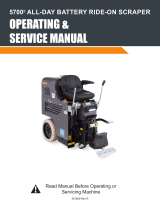 National Flooring Equipment 5700 Operating & Service Manual
National Flooring Equipment 5700 Operating & Service Manual
-
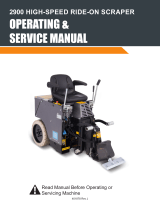 National Flooring Equipment 2900 Operating & Service Manual
National Flooring Equipment 2900 Operating & Service Manual
-
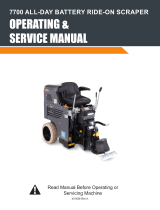 National Flooring Equipment 7700 Operating & Service Manual
National Flooring Equipment 7700 Operating & Service Manual
-
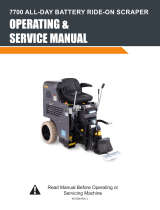 National Flooring Equipment 7700 Operating & Service Manual
National Flooring Equipment 7700 Operating & Service Manual
-
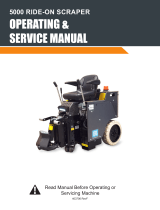 National Flooring Equipment 5000DL Operating & Service Manual
National Flooring Equipment 5000DL Operating & Service Manual
-
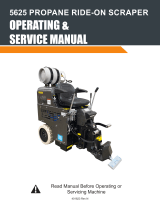 National Flooring Equipment 5625DL Operating & Service Manual
National Flooring Equipment 5625DL Operating & Service Manual
-
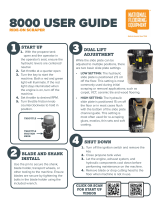 National Flooring Equipment 8000 User guide
National Flooring Equipment 8000 User guide
-
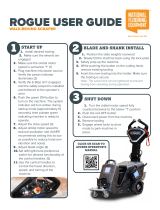 National Flooring Equipment Rogue User guide
National Flooring Equipment Rogue User guide
-
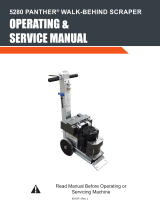 National Flooring Equipment 5280 Operating & Service Manual
National Flooring Equipment 5280 Operating & Service Manual
-
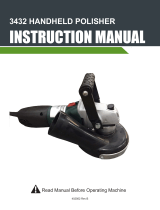 National Flooring Equipment 3432 Operating & Service Manual
National Flooring Equipment 3432 Operating & Service Manual
Other documents
-
National All Day Battery Ride-On 7700 User manual
-
National 5600 User manual
-
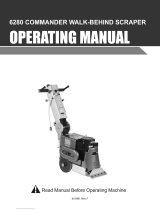 Nation Flooring Equipment 6280 Series Operating instructions
Nation Flooring Equipment 6280 Series Operating instructions
-
National 5200 PANTHER User manual
-
National PANTHER 5110 User manual
-
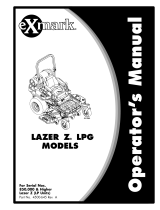 Exmark Laser Z Propane LZS29PKA604 User manual
Exmark Laser Z Propane LZS29PKA604 User manual
-
Exmark LAZER Z User manual
-
Blastrac BMS-220ADB Owner's manual
-
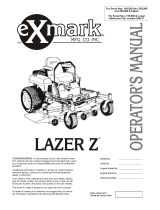 Exmark Laser Z LZ22KC603 User manual
Exmark Laser Z LZ22KC603 User manual
-
Cub Cadet Tank S S7237 User manual




























































